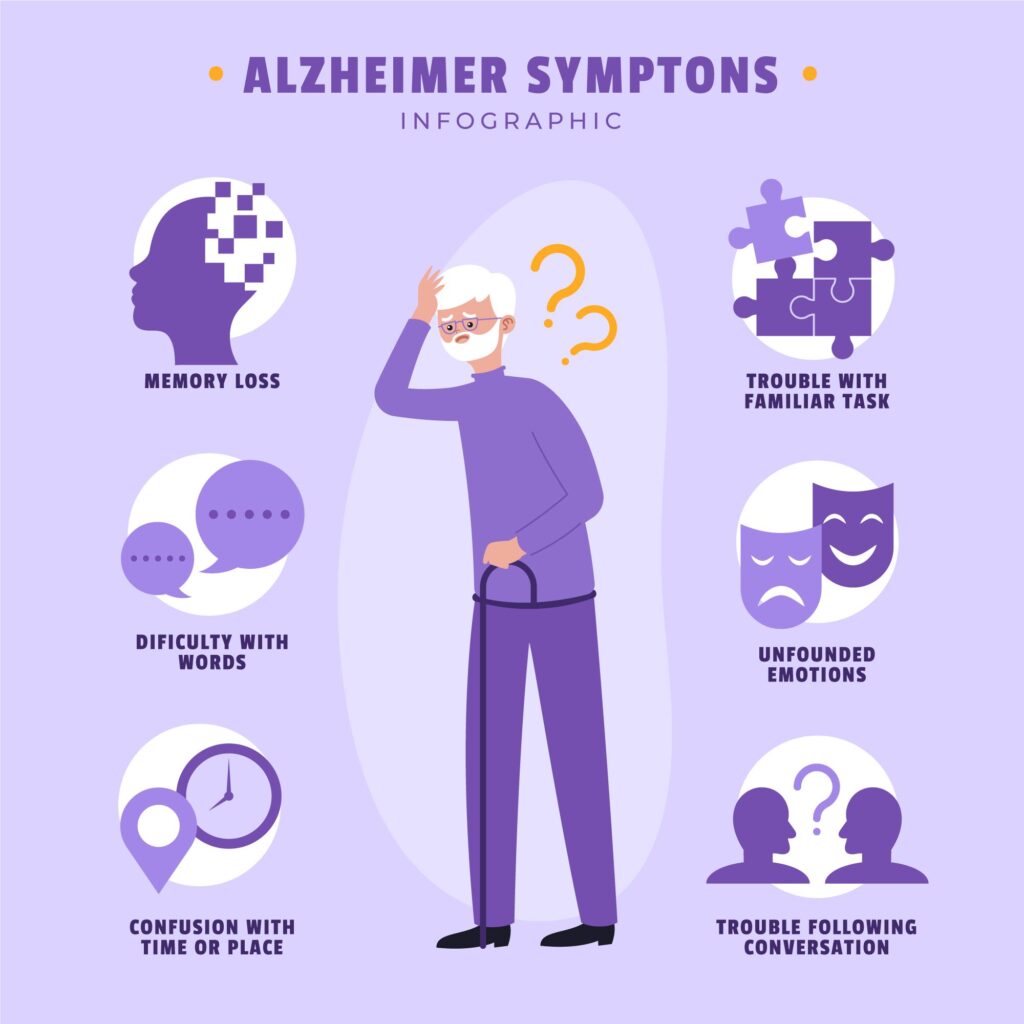A Historical Overview of Alzheimer’s Disease
In 1901, German psychiatrist Alois Alzheimer identified symptoms now associated with Alzheimer’s disease. He meticulously observed a female patient until her passing in 1906. Upon conducting an autopsy, he discovered the presence of amyloid plaques and neurofibrillary tangles, now recognized as key indicators of the condition. His colleague, Emil Kraepelin, initially categorized it as a distinct disorder but later referred to it as presenile dementia in the eighth edition of the Textbook of Psychiatry published on July 15, 1910.
During the late 1960s and 1970s, Alzheimer’s was recognized as a form of dementia with an unknown cause, prompting extensive research and advancements in diagnostic techniques. The 1980s brought crucial discoveries about abnormal protein accumulation leading to neuronal damage and cognitive decline. By the 1990s, improved imaging technologies facilitated early detection, enhancing treatment opportunities. Research into Alzheimer’s continues to evolve today.
Currently, various clinical trials are testing intervention strategies targeting plaque buildup and inflammation. Additionally, researchers are investigating the role of lifestyle changes in slowing cognitive decline.
Early Symptoms of Alzheimer’s Disease
The onset of Alzheimer’s symptoms varies among individuals, but memory loss is often the first noticeable sign. Some individuals experience mild cognitive impairment, which involves more frequent memory difficulties than usual.
Other common symptoms include difficulty completing familiar tasks, trouble with visual perception and spatial relationships, frequently misplacing objects, confusion about time and place, and difficulty keeping track of important dates. People with Alzheimer’s also struggle with communication due to language impairments, which typically manifest as reduced vocabulary and slower word retrieval.

Neurological Tests for Alzheimer’s Diagnosis
Advanced imaging techniques such as Magnetic Resonance Imaging (MRI) create detailed brain scans using magnetic and radio waves. These scans can detect shrinkage in brain regions linked to Alzheimer’s. Additionally, Fluorodeoxyglucose (FDG) PET scanning helps differentiate Alzheimer’s from other types of dementia. Individuals with a family history of early-onset Alzheimer’s may also consider genetic testing.
Can Alzheimer’s Be Cured If Diagnosed Early?
At present, there is no cure for Alzheimer’s, even if detected in its early stages. However, early diagnosis provides access to clinical trials that may offer potential medical benefits. Proper symptom management with appropriate medications can slow disease progression and enhance the patient’s quality of life.
The Influence of Stress on Alzheimer’s Disease Progression
Research suggests that stress significantly contributes to Alzheimer’s development. Chronic stress can accelerate brain deterioration, leading to severe dementia. Additionally, the stress associated with undergoing treatment can impact a patient’s ability to cope and maintain a good quality of life.
Although limited studies directly link stress to worsening Alzheimer’s, it is well-documented that stress activates the Hypothalamic-Pituitary-Adrenal (HPA) axis and increases corticosteroid levels, potentially triggering symptoms. The relationship between stress and Alzheimer’s is complex, but maintaining an active social life can help counteract its negative effects and promote overall well-being.
The Role of Lifestyle Changes in Alzheimer’s Management
Adopting a healthy lifestyle can be beneficial for individuals with Alzheimer’s. Regular physical activity improves mood and enhances overall health. Those with limited mobility can engage in stretching or seated exercises. Dietary modifications, particularly for individuals with Type 2 diabetes, may also be beneficial, as poorly controlled diabetes increases the risk of Alzheimer’s.
Ensuring good sleep quality is another important factor, as proper rest helps clear beta-amyloid plaques from the brain, a hallmark of Alzheimer’s. Other beneficial lifestyle adjustments include listening to calming music, having a pet, and surrounding oneself with meaningful items and photographs.
Mental and Emotional Impact of Alzheimer’s Disease
Individuals diagnosed with Alzheimer’s often experience significant mental and emotional changes. If a loved one is affected, caregivers should create a stable and familiar environment, as Alzheimer’s patients are highly sensitive to changes in their surroundings.
Encouraging them to recall happy memories with family and friends can provide comfort. If they become stressed, redirecting their attention to positive experiences or favorite activities can help alleviate distress.
Medications prescribed for Alzheimer’s patients may have undesirable side effects, such as dizziness, which can increase the risk of falls. Due to this, medications are typically reserved for severe behavioral symptoms, with a preference for non-drug interventions whenever possible.
Conclusion
Caring for someone with Alzheimer’s requires patience, understanding, and a holistic approach to improving their physical, emotional, and mental well-being. While there is no cure, early diagnosis allows for better symptom management through medications, lifestyle modifications, and clinical trials. Reducing stress, maintaining a familiar and secure environment, and promoting social interactions play a vital role in ensuring a higher quality of life for affected individuals.
Alongside caregiver support, adopting a healthy lifestyle and making dietary adjustments can slow disease progression. These efforts can help individuals with Alzheimer’s feel comfortable, valued, and supported throughout their journey.





